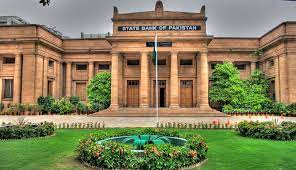Karachi April 7 2022: In the last meeting, Monetary Policy Committee had decided to keep the policy rate unchanged with a majority vote of 7 out of 8, with one member voting to increase the policy rate by 25bps.
Giving an overview of the real sector, the staff apprised the MPC that high frequency indicators suggest that economic activity continue to moderate since the last MPC meeting. Automobiles sales and electricity generation have declined month-on-month while POL and domestic cement sales have decelerated since last October. Meanwhile, some growth is witnessed in the import of machinery, consumer financing and tax collections.
Regarding aggregate supply, it was informed that conditions remained broadly encouraging. Large Scale Manufacturing (LSM) grew by 7.4 percent in H1-FY22 as compared to 1.5 percent increase during H1-FY21. The rebasing of national accounts by Pakistan Bureau of Statistics (PBS) along with an extended coverage of LSM through the addition of new products and businesses were also discussed. Eleven notable additions have been included in the LSM index, including wearing apparels (towels & garments), mineral water, furniture and sports goods such as footballs.
In agriculture, cotton production is likely to be around 8 million bales, significantly below the earlier estimate of 9.4 million bales. Agriculture input conditions for Rabi crop depict a mixed picture, where agricultural credit disbursement and tractor sales are doing satisfactorily while fertilizer usage and water availability are lower as compared to the preceding year.
Based on these developments, projection of real GDP growth in FY22 is maintained at 4.5 percent (on new base). The growth range since the last MPC meeting has also been kept unchanged at 4 – 5 percent.
Discussing recent developments in monetary aggregates, it was apprised that broad money (M2) growth has decelerated, largely owing to a contraction in the Net Foreign Assets (NFA) of the banking system. The contraction in NFA of the banking system was due to widening in the current account deficit as well as debt repayments. On the liability side, Currency in Circulation (CiC) decelerated slightly, owing to seasonal withdrawals of bank deposits (primarily demand deposits).
Further, the staff apprised that recent Private Sector Credit (PSC) trends were in line with seasonal patterns. PSC saw a net retirement in January 2022. On an overall basis, the expansion during FY22, so far, remains at historic high in nominal terms. The PSC increased by Rs. 849.2 billion during Jul 01- Feb 18 FY22, and is expected to increase more than Rs. 1 trillion by end of the current fiscal year. However, credit growth moderated slightly in nominal terms in January 2022, and remains negative in real terms. This slowdown is largely driven by working capital loans as major businesses like textile, cement, chemicals and steel repaid their loans in January 2022.
Apprising the Committee on credit growth, the staff noted that fixed investment and housing loans continue to expand on the back of SBP’s Temporary Economic Refinance Facility (TERF) and GoP’s Mera Pakistan Mera Ghar (MPMG) Scheme.
Elaborating on developments in consumer finance, the staff apprised that housing loans continue to grow on the back of SBP initiatives while growth in auto and personal loans moderated, in line with recent tightening efforts.
Regarding credit growth projections, the staff informed that credit growth is projected at 15.4 percent in FY22, largely in line with the projection range of 15 – 17 percent for FY22. However, for FY23, credit growth is expected to moderate and fall in the range of 10–12 percent, partly owing to the absence of SBP’s TERF in FY23, which was a major ca…










